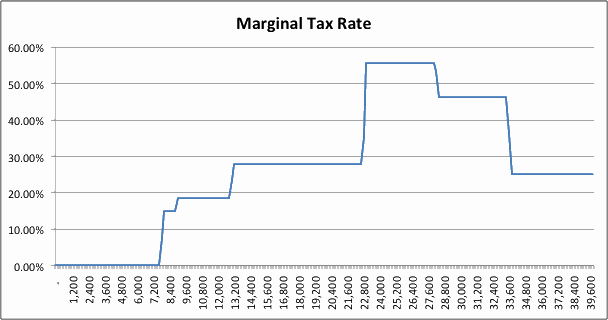jazz4cash
Give me a museum and I'll fill it. (Picasso) Give me a forum ...
I was going to do just that for 2015, my first full tax year of retirement. Moved $11K from my tIRA to a Roth IRA.
Then, after end of year capital gains distributions and total year dividends (qualified and regular) in my taxable accounts were totaled up the tax bill was over $2K. Removing the $11K of Roth conversion dropped the tax due to around $400.
I sent in the paperwork to re-characterize (undo) the Roth conversions.
So in my case it doesn't make sense because my taxable portfolio is larger than my tax deferred and provides a sufficient income stream via dividends and CG distributions to cover expenses. It also doesn't give me much if any headroom for Roth conversions.
As others have stated, it depends on the individual. I expect to be in nearly the exact same situation for 2016 and I will probably cough up the $1600 additional tax. I would probably pay tax with increased withdrawal from the deferred account but I have not given it much thought.

